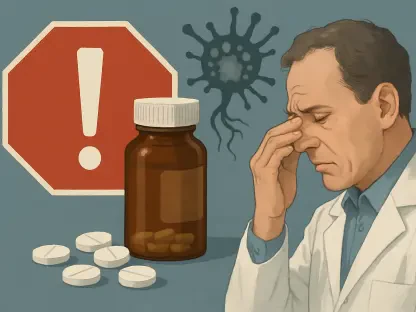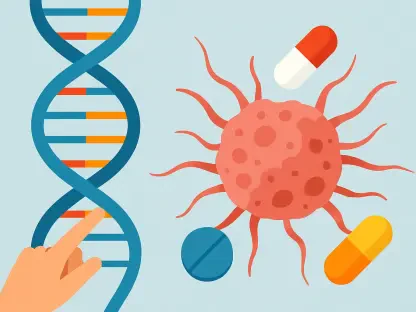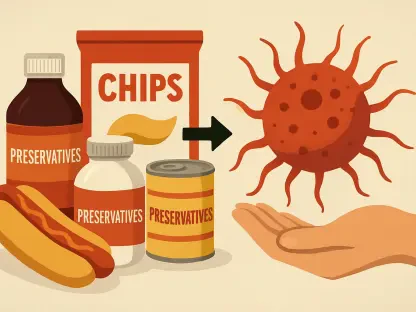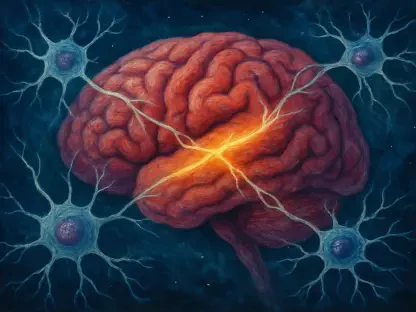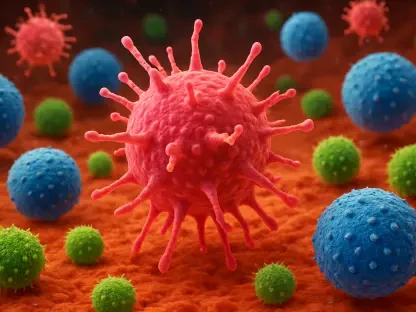In the world of biopharmaceutical innovations, Ivan Kairatov stands out as an expert in tech and development. His insights into the recent FDA approval of Gamifant are invaluable, particularly regarding its role in treating macrophage activation syndrome (MAS) associated with Still’s disease. This discussion delves into the details and implications of this new treatment.
Can you explain what macrophage activation syndrome (MAS) is and how it relates to Still’s disease?
MAS is a severe, life-threatening complication of Still’s disease, which includes systemic juvenile idiopathic arthritis. It is essentially a hyper-inflammatory condition, a secondary form of haemophagocytic lymphohistiocytosis (HLH), characterized by symptoms like high fevers, liver problems, splenomegaly, and abnormalities in blood coagulation. The connection to Still’s disease is pivotal because MAS often complicates the clinical picture of these patients and requires specific attention.
How does Gamifant work as a treatment for MAS?
Gamifant is a monoclonal antibody that targets and neutralizes interferon gamma, a cytokine involved in the inflammation pathway. By doing so, it helps to control the hyperinflammation that is a hallmark of MAS, thereby reducing the harmful symptoms associated with the syndrome.
Why is the approval of Gamifant significant for patients with Still’s disease?
This approval is revolutionary because it’s the first-time patients with MAS, specifically those associated with Still’s disease, have a dedicated treatment option. It offers a promising solution where conventional therapies have failed, particularly for those patients who do not respond well to glucocorticoids or have recurrent MAS episodes. This expands the therapeutic arsenal significantly.
What are the symptoms and potential dangers of MAS?
Symptoms of MAS include persistent high fevers, enlarged liver and spleen, low blood cell counts, and high levels of ferritin in the blood. These manifestations can rapidly progress to more severe conditions like multi-organ failure and death if not addressed promptly, underscoring the critical need for effective treatments like Gamifant.
Who are the patients eligible for the new treatment with Gamifant?
Gamifant is intended for both adult and pediatric patients who have HLH/MAS related to suspected or confirmed Still’s disease and have not responded adequately to glucocorticoids or cannot tolerate them. This also includes cases with recurrent MAS.
How does Gamifant differ from existing treatments for HLH/MAS?
Unlike conventional treatments primarily involving high-dose glucocorticoids and other immunosuppressants, Gamifant directly targets and neutralizes interferon gamma, thereby addressing the root cause of hyperinflammation. It offers a more targeted approach with potentially fewer side effects.
What were the key findings from the pooled study data supporting FDA approval?
The pivotal data showed that at week eight, 54% of patients achieved a complete response, while 82% reached clinical remission of MAS. These compelling results indicate a significant clinical benefit, providing strong support for Gamifant’s effectiveness and safety in treating MAS.
How does Gamifant improve patient outcomes compared to glucocorticoids?
Patients may experience fewer side effects from Gamifant compared to the often harsh side effects associated with long-term glucocorticoid use. This includes a reduced risk of reliance on high-dose glucocorticoids to manage symptoms, offering a better quality of life for patients.
How is Gamifant administered to patients?
Gamifant is administered as an intravenous infusion. The method of delivery is crucial as it ensures the drug is quickly available in the bloodstream to address the severe symptoms of MAS effectively.
What is the significance of Gamifant already being approved for primary HLH?
The prior approval for primary HLH lent confidence to the treatment’s efficacy and safety profile, enhancing its credibility as a therapeutic option for MAS. It demonstrates proven benefits in a related, severe inflammatory condition, which informs and supports its extension to MAS.
How does Sobi’s expertise in primary HLH contribute to their approach in treating MAS?
Sobi’s deep understanding of HLH has paved the way for leveraging their insights and experience to address MAS. This expertise ensures a focused, informed approach to developing and delivering treatments for MAS, enhancing confidence in Gamifant’s application.
What were Alexei Grom’s comments on the new approval and its impact on treatment options?
Alexei Grom highlighted the significant unmet medical needs of MAS patients and emphasized that Gamifant, being the first FDA-approved treatment, provides a much-needed alternative. It addresses hyperinflammation while reducing reliance on high-dose glucocorticoids, greatly widening treatment options.
In what ways do you anticipate Gamifant will change the standard care for MAS in Still’s disease?
Gamifant is likely to shift the treatment paradigm by providing a targeted, monoclonal antibody approach to managing MAS. This could lead to less dependency on high-dose steroids, improving the standard care and overall patient outcomes.
What unmet medical needs does Gamifant address for patients affected by MAS?
Previously, treatment options were limited and often insufficient, leaving many patients without adequate medical solutions. Gamifant fills this gap by addressing hyperinflammation more specifically and effectively than conventional therapies, thereby meeting a critical need in MAS management.
How do you see the landscape of MAS treatment evolving with the introduction of Gamifant?
The introduction of Gamifant sets a precedent for potentially more personalized and effective therapies in the MAS treatment landscape. It may inspire further innovations and research, possibly leading to more advanced, targeted treatments in the future.
Are there any potential side effects or considerations for patients using Gamifant?
While Gamifant generally has a favorable safety profile, as with any treatment, monitoring for common infusion-related reactions is necessary. As the drug targets specific immune pathways, it’s crucial for healthcare providers to monitor patients for infections and other immune-related complications.
How does hyperinflammation contribute to the severity of MAS, and how does Gamifant address this issue?
Hyperinflammation is fundamental to MAS, causing widespread tissue damage and organ failure if unchecked. By neutralizing interferon gamma, Gamifant directly counters this unchecked inflammatory response, thereby alleviating the severity of the condition.
Do you have any advice for our readers?
Stay informed about new advancements as they provide hope and options for better management of complex conditions like MAS. Engaging with your healthcare provider to explore these innovations can be crucial for improving outcomes and enhancing quality of life.


